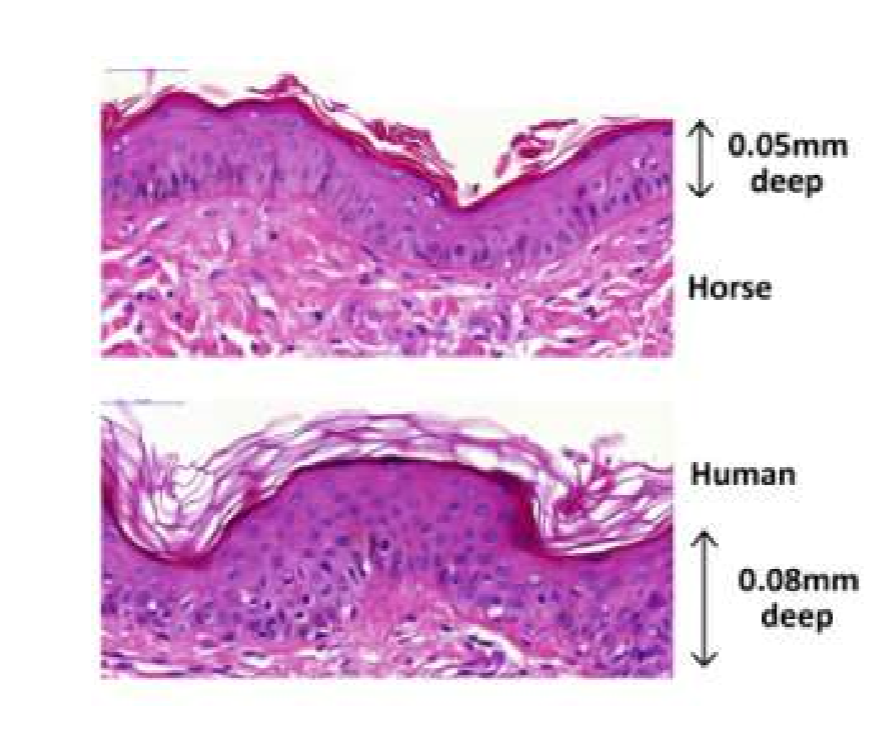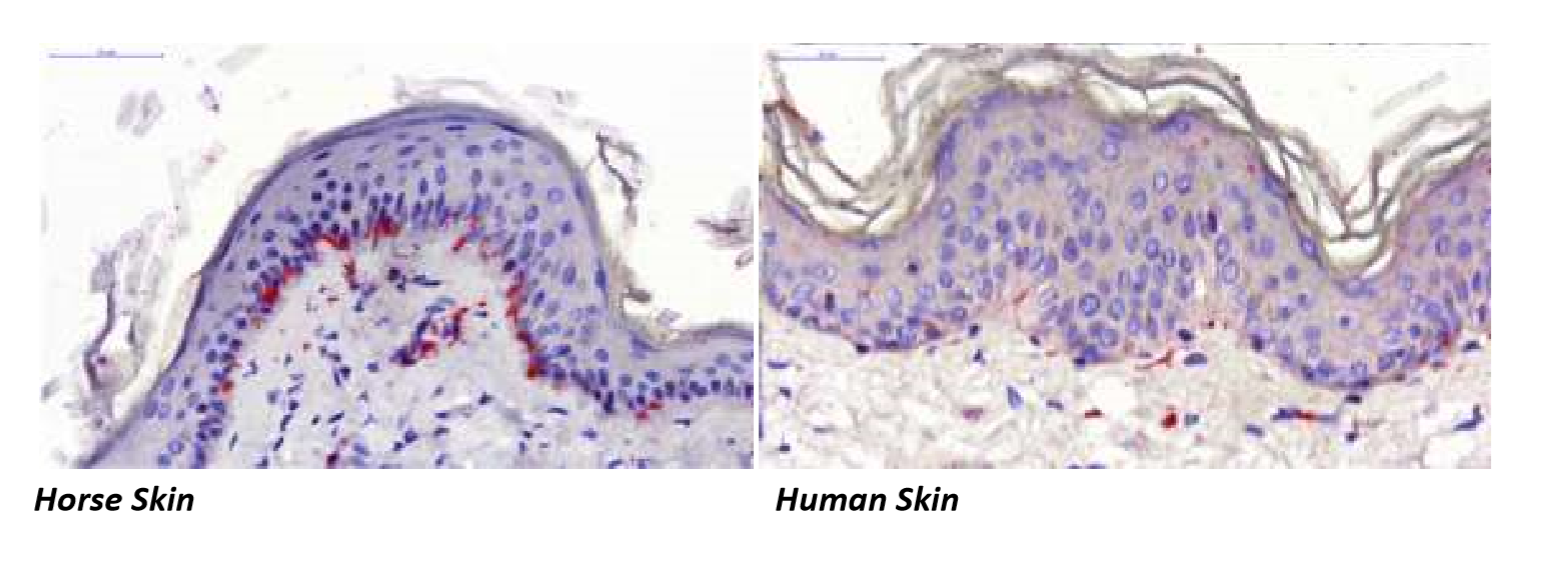REPORT FROM DR LYDIA TONG MA VetMB Veterinary Pathologist NSW Department of Primary Industries
@drdoolydia
http://www.abc.net.au/catalyst/stories/4201890.htm
Large animals like horses are commonly said to have ‘thick skin’ – and thick skin is associated with stoicism and insensitivity. But is this assumption fair on horses? Has anyone actually ever looked at this scientifically?
Whilst there is some information out there about horse skin thickness it appears that, as far as we can tell, no one has ever looked specifically at the pain sensing fibres in the skin of horses.
We decided to see if horse skin thickness and nerves were really that different to human.
To do this, I took a piece of horse skin from the flank area (the area where the horse is usually whipped), as well as a piece of skin from the equivalent area on a human. Using both routine and special techniques, I was able to look at both the structure of the skin, but also the precise location and amounts of nerve tissue.
No one has ever used this technique in horse skin before, nor have they specifically compared human skin to horse skin in this way.
I looked at the skin to answer two questions–
1. What was the difference in the thickness of horse and human skin? 2. How many nerves does the horse have in its skin in comparison to humans.
Examination of the horse and human skin under the microscope revealed a few surprising things:
**The horse skin was thicker, but by less than 1mm! And this was primarily just the deep collagen tissue (which sits below the superficial pain sensing fibres). See figure 1.
 Figure 1. (right) A piece of horse and human skin side by side, showing a comparison of depth. The pink area shows the collagen (dermis), and the thin purple area at the top is the epidermis, where most of the painsensing nerve fibres are found.
Figure 1. (right) A piece of horse and human skin side by side, showing a comparison of depth. The pink area shows the collagen (dermis), and the thin purple area at the top is the epidermis, where most of the painsensing nerve fibres are found.
**The horse epidermis (the very top most layer of skin where the pain sensing nerves are found) was actually thinner than the human epidermis. This means that the horse has fewer skin cells lying between the source of the pain (e.g. a whip), and its sensitive nerve endings. In some ways you could therefore argue that when it comes to pain, the horse’s skin is thinner.
Figure 2. (left) A close up of the very top layer of the skin (epidermis) where the sensitive pain sensing nerve fibres end.
The human epidermis is thicker than the horse epidermis, so there are more cells lying on top of the nerve endings.
**Finally – a special stain that only stains nerve tissue revealed that the horse appears to have considerably more nerve endings in its skin than the human skin, including the nerves in the epidermis (superficial cells) where the pain sensation primarily occurs.
Figure 3. (below) A special staining technique called “immunohistochemistry” allows us to specifically stain up only nerve endings, in this case they have been stained a bold red. There are more nerve endings in the horse skin than the human skin, including in the epidermis (the layer on top with all the blue circles). These represent sensory fibres, including those which feel pain.

We were astounded by these simple findings.
This small pilot study suggests that horse skin really doesn’t have all the supposed ‘padding’ from pain that we often assume larger animals have. And even more revealing than that, the skin of the body – where we whip horses – may have even more sensation than ours.
To really get to the bottom of exactly how human and horse skin differs in thickness and sensation, we need to look at skin from more people and horses. For that reason, I will be extending this work to a full sized research project. I believe that the best way to make a decision about horse whipping is by establishing the facts through science. Are we using pain to make horses run faster? So far, it certainly looks like it.